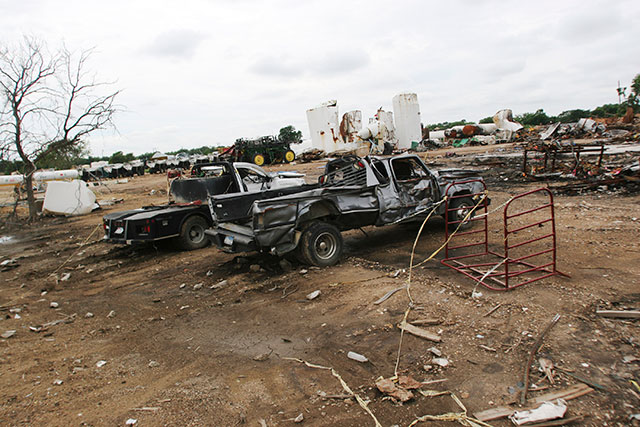
Marchers continued along Route 1 towards Washington DC on day two of the Poor People’s March. A small group of committed marchers had walked all night to make it to College Park, Maryland this morning, where others met up with them after a night of rest to finish off the last 7 miles.

The marchers enter Freedom Plaza in Washington DC, which marked the end of the 41-mile Poor People’s March that had begun yesterday in Baltimore.

Carlos Dufflar, who was a part of the 1st Poor People’s Campaign and March when it kicked off exactly 45 years ago today, is currently marching with us to DC for this year’s Poor People’s Campaign and March.

In honor of Mother’s Day, women are leading the Poor People’s Campaign March today. It was also exactly 45 years ago today that Coretta Scott King led the kickoff of the Poor People’s Campaign.

Police officers attempt to stop marchers from entering a Walmart parking lot where they were planning to rally in support of workers’ rights. The marchers far outnumbered the police, and successfully made it to the front of the store without any arrests.

Marchers on Route 1 right outside of Baltimore on their way to Washington DC. They are taking the same historical route used by prior Civil Rights leaders in the campaign to desegregate restaurants and other facilities

The opening night was dedicated to remembering Anthony Anderson, who was killed by Baltimore police officers in front of family members on September 21, 2012, in a vacant lot where the march began. In January 2013, the Baltimore State’s Attorney decided not to prosecute the officers involved. Community members including march organizer Reverend C.D. Witherspoon hold regular vigils at the East Biddle Street lot to decry ‘police terror’ which claims the life of a black person every 28 hours in the US.

Marchers rally in support of workers’ rights at a Walmart store outside Baltimore Saturday afternoon. Police initially refused to allow the marchers onto the parking lot but yielded after a tense exchange which included shoving but no arrests. March endorser OUR Walmart has long organized protests at Walmart locations across the country, most notably on Black Friday last year, which spurred a significant decline in the company’s brand ranking.

A family in East Baltimore welcomes marchers from the Poor People’s Campaign.

Marchers trek through Baltimore neighborhoods which have been upended by decades of endemic poverty. Boarded up homes stretch for blocks across the city, underlined by a recent report which showed the percentage of city housing units that are vacant or abandoned has increased by 43 percent since 2001.

The Poor People’s Campaign begins a 41-mile march from Baltimore to Washington, DC to mark the 50th anniversary of the Jobs and Freedom March in 1963, and 45th anniversary of The 1968 Poor People’s Campaign. Marchers hope to address a range of economic justice concerns from mass incarceration to the need for jobs and adequate funding of education and healthcare.
We’re not backing down in the face of Trump’s threats.
As Donald Trump is inaugurated a second time, independent media organizations are faced with urgent mandates: Tell the truth more loudly than ever before. Do that work even as our standard modes of distribution (such as social media platforms) are being manipulated and curtailed by forces of fascist repression and ruthless capitalism. Do that work even as journalism and journalists face targeted attacks, including from the government itself. And do that work in community, never forgetting that we’re not shouting into a faceless void – we’re reaching out to real people amid a life-threatening political climate.
Our task is formidable, and it requires us to ground ourselves in our principles, remind ourselves of our utility, dig in and commit.
As a dizzying number of corporate news organizations – either through need or greed – rush to implement new ways to further monetize their content, and others acquiesce to Trump’s wishes, now is a time for movement media-makers to double down on community-first models.
At Truthout, we are reaffirming our commitments on this front: We won’t run ads or have a paywall because we believe that everyone should have access to information, and that access should exist without barriers and free of distractions from craven corporate interests. We recognize the implications for democracy when information-seekers click a link only to find the article trapped behind a paywall or buried on a page with dozens of invasive ads. The laws of capitalism dictate an unending increase in monetization, and much of the media simply follows those laws. Truthout and many of our peers are dedicating ourselves to following other paths – a commitment which feels vital in a moment when corporations are evermore overtly embedded in government.
Over 80 percent of Truthout‘s funding comes from small individual donations from our community of readers, and the remaining 20 percent comes from a handful of social justice-oriented foundations. Over a third of our total budget is supported by recurring monthly donors, many of whom give because they want to help us keep Truthout barrier-free for everyone.
You can help by giving today. Whether you can make a small monthly donation or a larger gift, Truthout only works with your support.